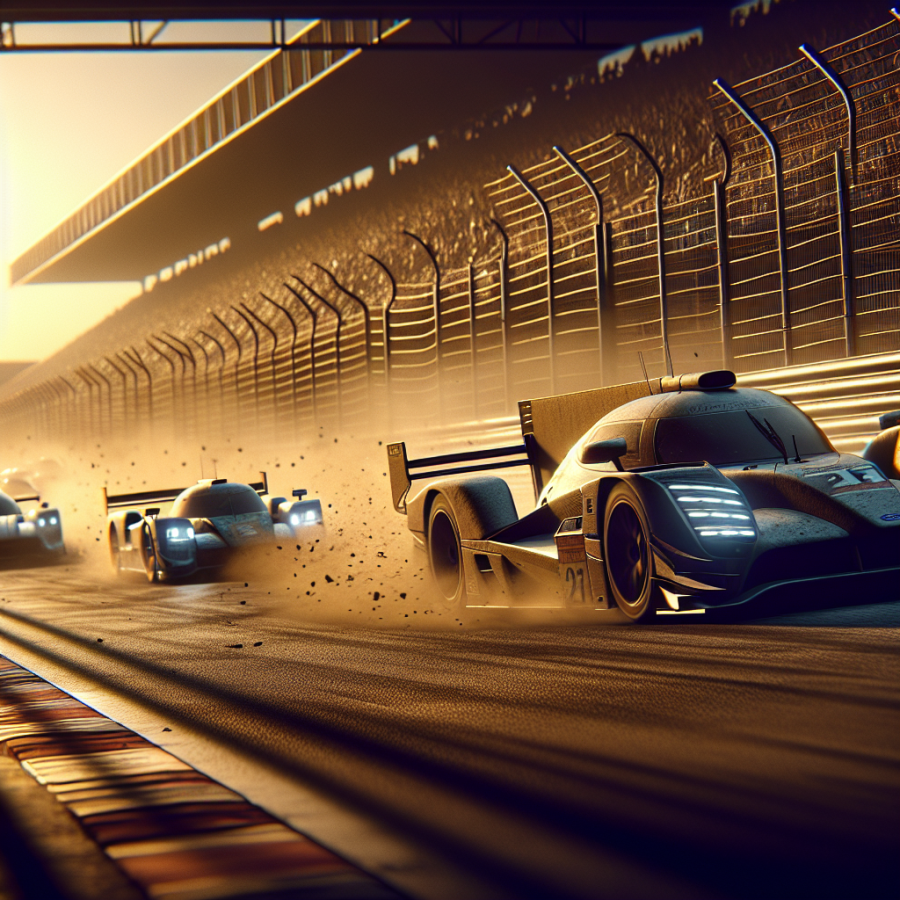Overcoming Obstacles: The Grit and Resilience Needed in Motorsport Challenges
Motorsport, a seemingly fast and glamorous sport, comes laden with challenges that require as much mental strength as physical prowess. It is a sport that tests the participants' resilience and grit, often pushing them to their limits and beyond. Participants face obstacles at different stages of their involvement in the sport, from a beginner level to a professional front.
Understanding the gritty nature of motorsport is crucial in overcoming the inevitable obstacles you will meet down the race lane. Grit, often conceived as passion and perseverance for long-term and meaningful goals, plays an essential role in motorsport. It is the unwavering commitment towards your goal of crossing the finishing line, whatever the circumstances and however challenging the track may be.
Racing tracks and conditions are never constant in motorsport, adding another dimension to its intricate, challenging nature. Be it the rain-soaked tracks that can reduce visibility to zero or the bumpy terrains that jolt the rider out of their comfort zone, it requires immense grit to persevere through these challenges. The unpredictable nature of the sport signifies that mental preparedness and flexibility for unplanned situations are imperative to a driver's success.
Further, participants are often faced with mechanical failures and technical glitches, which can be significant setbacks. Performing under such pressures, pulling oneself out of the disappointing slump and getting back on track is where resilience comes into play. It is the ability to recover and return stronger in adversity that characterizes the true spirit behind motorsport.
In motorsport, resilience also takes the form of physical strength and endurance. Racing, be it on two wheels or four, can be physically stressful. It requires physical fitness, hand-eye coordination, and quick reflexes. The continuous exertion can leave the participant physically drained. Here, resilience implies bouncing back from physical fatigue, regaining strength and endurance faster to continue the race.
Preparation is a vital aspect of overcoming challenges in motorsport. This includes but is not limited to training, skill development, learning new tracks, and understanding various racing conditions. However, it also means figuring out coping mechanisms and strategies to handle stress, pressure, and adrenaline rushes. Motorsport participants must train their minds to remain focused and calm despite the significant challenges they face during a race.
Building resilience and grit doesn't happen overnight, nor is it a linear journey in the field of motorsport. It requires consistent effort, time, commitment, and most importantly, a positive mindset.
Read also:
The Surprising Reality: Can Golf Balls Really Get Waterlogged?"
Discovering the Adrenaline Rush: The Thrilling Aspects of Motorsport
Motorsport traces its history back to the late 19th century, when the first petrol-fueled internal combustion engines were invented. Since then, it has evolved into a global phenomenon, attracting millions of fans, participants, and investors worldwide. Whether it's Formula One, NASCAR, motorbike racing, or rallying, motorsport offers an incredible blend of speed, precision, and adrenaline rush.
One of the most thrilling aspects of motorsport is speed. There is nothing more exhilarating than being in a high-powered vehicle and pushing it to its limits while navigating a challenging course or terrain. This sheer thrill of speed isn't something you can easily replicate in everyday life, making motorsport a high-stakes endeavor that demands nerves of steel and a deep-seated passion for the sport.
The art, or perhaps science, of precision driving also adds to the intense excitement that surrounds motorsport. This involves judging the perfect moment to brake, the optimal line to take through a corner, or the exact point at which to overtake a rival. With a margin of error that's often just a split second, precision driving places massive demands on drivers' concentration, reactions, and decision-making abilities. When executed correctly, precision driving is a symphony of man and machine in perfect harmony, and this spectacle is undoubtedly one of the most thrilling aspects of motorsport.
The concept of racing is in itself an adrenaline-filled experience, whether you're a driver, a team member, or a spectator. The unpredictability that comes with racing, such as changing weather conditions, mechanical issues, or split-second decisions, make each race a thrilling ride. One minute, a driver could be leading the pack by a wide margin; the next, they could slip to the back due to an unexpected pit stop or a crash.
The danger element is an inherent part of motorsport and contributes significantly to the adrenaline rush. Motorsport rallies are particularly notable for their challenging terrains, ranging from snow-covered roads to scorching deserts and everything in between. These harsh conditions offer no room for error, making the adrenaline levels even more elevated.
While motorsport is indeed a thrilling venture, it's essential to keep in mind the challenges involved. Not only is it physically demanding, but it also puts immense psychological stress on the participants. Drivers must remain calm and focused under extreme pressure. The stakes are often high, injuries not uncommon, and the financial burden can be significant.




